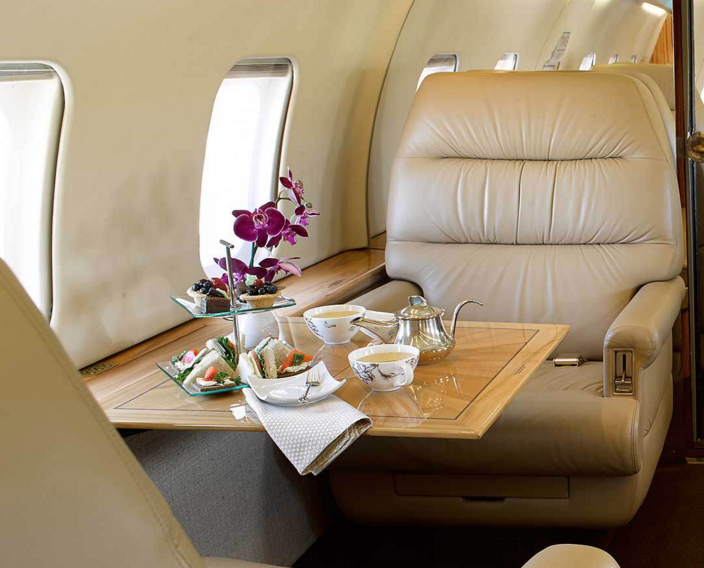In one of my very favorite Brian Regan skits, the comedian talks about the perils of meals while flying. In his animated flight attendant voice, he says, “Would you like a nice cold fish head? They’re frozen solid: frozen head of fish, the eyeballs in there and the skeleton’s coming out. It comes with a turnip and a spork.”
Even in first class, airline seats are not ranked as anyone’s favorite place to eat. When you move to even more elite travel, like that on a private jet, your expectations expand exponentially. That’s why it’s so important to consider the galley amenities when selecting this multi-million dollar asset.
The ideal aircraft galley must maximize space and offer the right amenities for satisfactory refreshments and meals on board.
The design of the galley depends heavily upon the range of the aircraft. On a shorter-range aircraft, passengers may carry on a carafe of coffee or a cooler of orange juice because available galley space was used for an extra seat, instead. Coffee makers, microwaves and coolers are not standard on turboprops, light or even mid-sized jets. As you move up in size and range, the galley amenities definitely become more sophisticated, as more meals are served on board.
On an aircraft that’s capable of a 15-hour, 7,500-nautical-mile flight, storage space becomes critically important. On a flight that long, you’ll probably eat three meals and have several snacks. If you’re in an aircraft that has 10 other passengers, you need to have enough flatware and cutlery to serve everyone. In most large-cabin jets, a convection oven and microwave typically come standard. If the oven is large enough to be used as storage space when not in use, you need to make sure it has safety measures that prevent it from turning on while being used for storage.

In order to satisfy every passenger’s needs, you also need a global mindset. A small, often overlooked detail is the coffee service. A standard U.S. coffee maker is perfectly acceptable for Americans. But if you’re flying with a client from the U.K., American coffee simply won’t provide the impression you want; you’ll need an espresso machine and teakettle. Asian passengers might require different drinkware for sake. When doing business in a global market, crossing oceans and dealing with clients and colleagues that come from multiple cultures, having several options onboard ensures a pleasant experience for everyone.
Another important issue is the location of the galley. On newer large-cabin Gulfstreams, for instance, aircraft purchasers have the option for either an aft or forward galley. For daytime operations, an aft galley makes more sense. That way, a board meeting can be taking place around the conference grouping, while flight attendants serve a meal from the nearby galley. The forward galley, however, lends privacy to passengers on longer overnight legs, where the aft living area is turned into a stateroom for sleeping purposes.
The technologically advanced cabin management systems of today can be intimidating and difficult to understand. Crew members and frequent passengers need to know how the galley functions. From the WiFi to the coffee maker, hundreds of thousands of dollars have been wasted if nobody knows how it works. At the very least, make sure somebody on the aircraft knows how to make coffee without a huge mess. The success of your landing may depend on it!
The bottom line is that private aircraft are an extension of your home and office. While often overlooked, the galley is a key factor in making sure flying privately is an outstanding experience.
[ulp id=’xkA7bnsbSMSAnwAm’]

